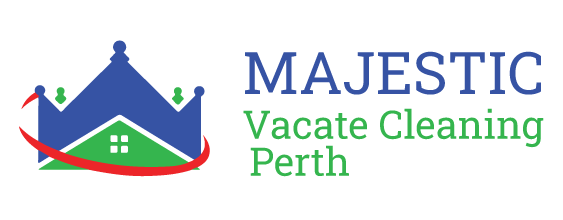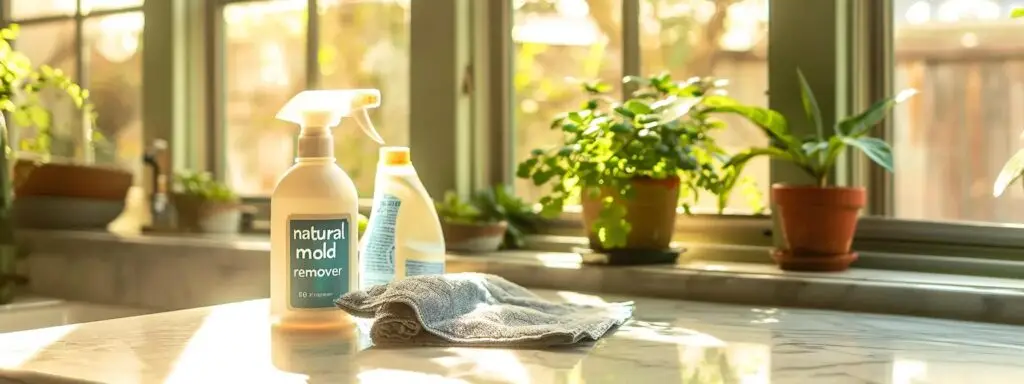Natural Ways to Get Rid of Mold: Non-Toxic DIY Mold Removal
Mold is a common problem in indoor environments, especially in damp or poorly ventilated areas such as basements, bathrooms, and kitchens. As an unwanted fungus, mold not only damages surfaces by staining and creating unpleasant odors but can also lead to health complications, including allergies, respiratory issues, and skin irritation. Homeowners often seek natural and non-toxic solutions for mold removal because chemical cleaners may pose risks to human health and the environment. This comprehensive article discusses how mold develops, explains safety precautions, and provides effective natural agents and methods for cleaning mold, as well as preventive strategies to protect indoor air quality. The following sections will explore mold types, growth conditions, health implications, and step-by-step instructions for using natural cleansers like vinegar, tea tree oil, and baking soda. Additionally, recent scientific studies and expert recommendations support these methods as safe, effective, and sustainable. Transitioning from mold understanding to practical solutions, the article explores DIY mold removal procedures and offers actionable tips for preventing future infestations.
Key Takeaways
- Mold thrives in damp, humid environments and can affect indoor health severely.
- Natural mold removal methods, including vinegar, tea tree oil, and baking soda, offer effective non-toxic alternatives.
- Safety precautions such as personal protective equipment and proper ventilation are crucial during mold remediation.
- Regular cleaning and moisture control are essential to preventing mold regrowth.
- Recognizing when professional help is needed can prevent further damage and health risks.
Understanding How Mold Develops for a Natural Way to Get Rid of Mould
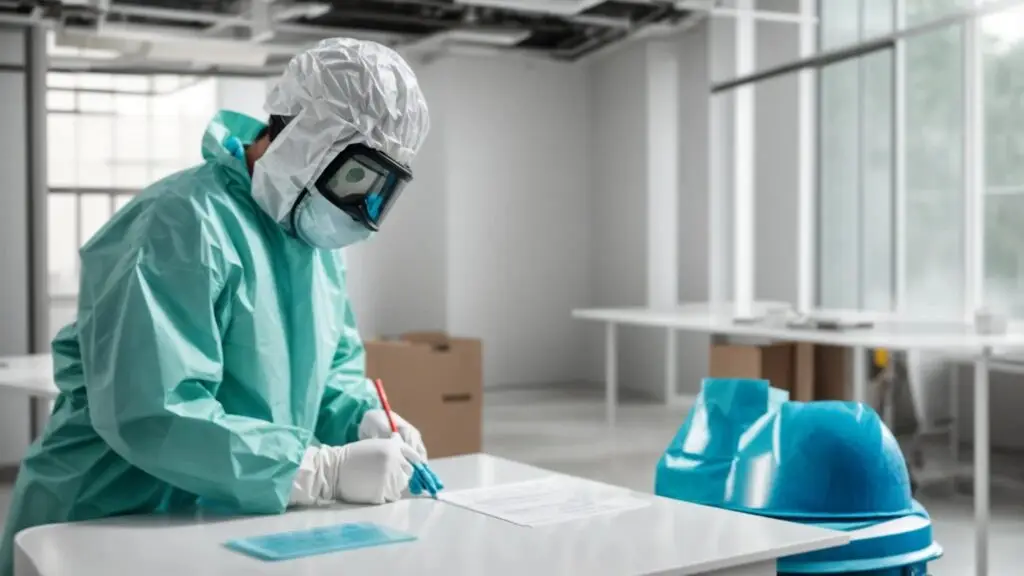
Mold is a type of fungus that reproduces through spores which float through the air and settle on damp surfaces. Understanding how mold develops is essential to develop natural strategies for its removal. The development of mold involves several environmental factors that work together to create an ideal breeding ground.
Common Household Mold Types and Their Appearance
Mold in households can take various forms, including black, white, green, or even orange discolorations. Common household molds include Aspergillus, Cladosporium, and Penicillium. Aspergillus is often observed as a greenish or grayish patch on walls and ceilings whereas Cladosporium may present as a black or brown fuzz. Penicillium, best known for its role in antibiotic production, appears as blue-green patches on damp surfaces. Identification is essential because treatment may vary depending on the species. Numerous mold species release mycotoxins that may impact the immune system and respiratory health. Recognizing these molds through their distinct appearance helps homeowners decide when to intervene with natural cleaning methods.
For ceiling-specific mold concerns, particularly when preparing to move out of a rental property, refer to our step-by-step guide to safe ceiling mould removal before you move out.
Key Conditions That Encourage Mold Proliferation
Mold proliferation occurs when organic material, high humidity, and moisture come together in a confined space. Leaking roofs, condensation on windows, or inadequate ventilation in bathrooms all create conditions where mold can flourish. When moisture accumulates on surfaces such as wood or drywall, mold spores have a ready food source and moisture to begin colonization. The Centers for Disease Control and Prevention (CDC) and the United States Environmental Protection Agency (EPA) stress that maintaining indoor humidity below 60% is critical. Moreover, factors like poor insulation, water damage, and high outdoor humidity levels also contribute to mold growth. By identifying key conditions such as water leaks, condensation, and poor drainage, homeowners can begin to apply the first steps of mold prevention with natural solutions.
Spotting Early Signs of Mold in Your Residence
Spotting early signs of mold growth can prevent a minor issue from evolving into a major contamination problem. Homeowners must be vigilant, especially in areas with moisture problems. Early signs include a musty odor, visible discoloration on walls or ceilings, and the presence of small, scattered spots that may later develop into larger patches. Often, mold begins as a few isolated spots before building into more invasive colonies. Scratches, stains, or even bubbles on surfaces can indicate underlying mold activity. Early detection allows for prompt natural treatment using non-toxic cleaning solutions before extensive damage occurs, ensuring a healthier indoor environment.
Health Implications Linked to Indoor Mold Exposure
Exposure to mold indoors poses a multitude of health risks, particularly for people with allergies, asthma, or weakened immune systems. Mold spores, when inhaled, can irritate the lungs and trigger respiratory issues, coughing, and sneezing. Long-term exposure could lead to chronic respiratory problems and persistent upper respiratory infections. Additionally, molds produce allergens and mycotoxins that can cause skin irritation and even neurological symptoms in sensitive individuals. It is essential for occupants to be aware of signs such as prolonged coughing, wheezing, or nasal congestion, which may signal mold-related health issues. Researchers have noted that sustained exposure to mold increases the risk of allergic reactions and even contributes to the development of asthma in predisposed individuals. This underscores the importance of using safe, natural remedies for mold removal to reduce these health hazards without introducing harsh chemicals.
Why Moisture Control Is Fundamental to Mold Prevention
Moisture control is a cornerstone of effective mold prevention. Mold requires water to grow, so ensuring that indoor environments remain dry and well-ventilated is paramount. This involves regular checks for leaks, prompt repairs to any water damage, and the use of dehumidifiers or proper ventilation systems in high-moisture areas such as kitchens, bathrooms, and basements. The application of waterproofing solutions to basements and roofs also plays a critical role in reducing moisture buildup. By maintaining an environment where the relative humidity is kept under control, the chances for mold spores to settle and germinate are significantly reduced. Homeowners must integrate moisture management into their maintenance routines to ensure that the conditions that foster mold growth do not return after cleaning.
Safety Preparations for a Natural Way to Remove Mold

Before tackling mold removal with natural agents, it is crucial to take safety precautions to protect personal health and prevent the spread of mold spores during the cleaning process. Preparing adequately with weaponized personal protective equipment (PPE) and proper work area management is a non-negotiable step in DIY mold remediation projects.
Essential Protective Gear for DIY Mold Cleaning
When cleaning mold naturally, wearing the right protective gear is essential to minimize exposure to airborne spores and potential mycotoxins. At a minimum, homeowners should equip themselves with an N95 or better respirator mask to filter out small particulates. Goggles or safety glasses protect the eyes from splashes of cleaning agents, and gloves—preferably made of rubber or nitrile—prevent skin contact with mold or contaminated cleaning solutions. Additionally, long sleeves and pants can offer extra protection, particularly when cleaning larger infestations. Studies have shown that wearing proper PPE can reduce allergic reactions and respiratory distress, ensuring that homeowners can clean safely without exacerbating health issues linked to mold exposure.
Ventilating Work Zones During Mold Remediation
Effective ventilation is critical in preventing the buildup of mold spores and fumes from natural cleaning agents. Opening windows and using fans to circulate fresh air not only helps disperse airborne spores but also accelerates the drying process after cleaning. The Centers for Disease Control and Prevention (CDC) recommends ensuring that the work area is well-ventilated to reduce exposure and prevent recontamination. When natural substances like vinegar or hydrogen peroxide are used, their fumes can be mildly irritating, making it essential to maintain an air flow. Ventilation helps in reducing the concentration of mold particles in the air, which is particularly important during prolonged cleaning sessions in confined spaces.
Safe Handling Practices for Natural Cleaning Substances
Even though natural mold removers are less hazardous than chemical alternatives, certain precautions must be taken when handling concentrated substances. Always dilute substances such as vinegar, hydrogen peroxide, or tea tree oil according to recommended ratios, as these agents can be corrosive or irritating in their undiluted forms. It is advisable to use measuring tools like teaspoons or tablespoons for precision when mixing cleaning solutions. Keep all mixtures in clearly labeled spray bottles to prevent accidental misuse and ensure that storage areas are secure and well-ventilated. Maintaining safe practices when preparing and applying these solutions ensures that the process remains effective against mold while minimizing any potential hazards to the respiratory system and skin.
Containing Mold Spores During the Removal Process
Containing mold spores during removal is vital to prevent them from spreading to other parts of the home. One effective method is to use plastic sheeting to seal off the affected area. Tape the sheeting to create a barrier that limits the escape of airborne mold spores into clean areas. Dusting the area with a damp cloth before applying cleaning agents can also help capture loose spores, which minimizes additional inhalation or contamination. In enclosed spaces, using an air purifier equipped with a HEPA filter can capture particles as small as 0.3 microns, greatly reducing the concentration of mold spores in the air. These containment strategies are recommended by mold remediation experts to ensure safe and controlled cleaning without further dispersion of hazardous spores.
Proper Disposal of Materials Contaminated by Mold
After cleaning and removal, properly disposing of mold-contaminated materials is an important aspect of the remediation process. Items such as old cleaning cloths, disposable protective gear, and heavily infested porous materials should be sealed in plastic bags and discarded safely. Following local guidelines for hazardous waste disposal ensures that these materials do not become a source of ongoing contamination. In some cases, items like drywall or insulation that have been severely affected by mold may need to be replaced entirely. Safe disposal not only protects indoor air quality but also prevents mold regrowth by removing the contaminated material that could serve as a substrate for further fungal colonization.
Potent Natural Agents for Getting Rid of Mold
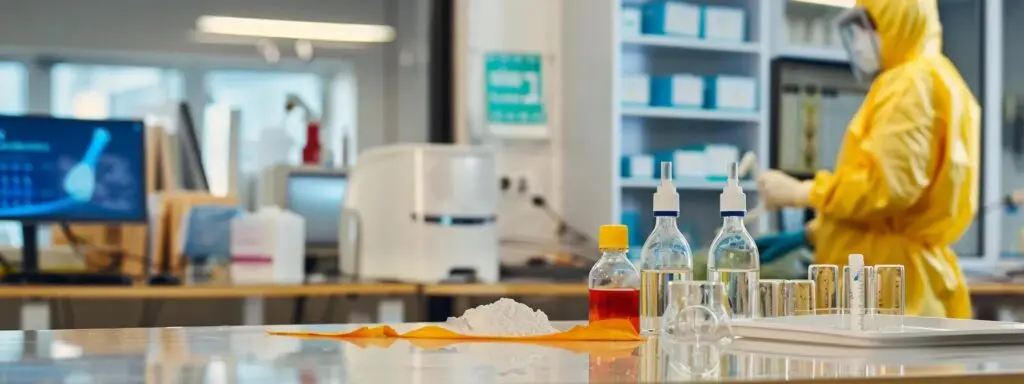
Natural agents offer safe, effective alternatives to chemical-based mold remediation. These non-toxic substances are widely available and have been used historically in home remedies. Scientific studies and extensive user experiences demonstrate that natural mold removers can disrupt mold cell structures and prevent fungal growth without introducing hazardous chemicals into the living environment.
Vinegar Solutions for Effective Mold Neutralization
Vinegar is one of the most popular natural cleaning agents for mold due to its acidic nature. Acetic acid in vinegar penetrates the cell walls of mold spores and disrupts their growth. Studies have shown that spraying undiluted white vinegar on mold-affected surfaces and leaving it to sit for at least one hour can reduce mold colonies significantly. In practical applications, homeowners often combine vinegar with water to create a safe cleaning solution tailored to various surfaces. In addition, vinegar’s antimicrobial properties help prevent recontamination when used as a regular maintenance cleaner, making it an indispensable tool in a homeowner’s mold remediation arsenal.
Tea Tree Oil Applications for Mold Eradication
Tea tree oil, derived from the leaves of the Melaleuca alternifolia tree, has strong antifungal and antiseptic properties. Laboratory tests have demonstrated its ability to inhibit various fungal species, including those responsible for mold growth. A common recipe involves mixing one teaspoon of tea tree oil with one cup of water in a spray bottle, then applying the solution to moldy surfaces and leaving it to dry naturally. The essential oil disrupts the integrity of mold cell membranes, leading to cellular collapse and eventual mold death. Tea tree oil is particularly effective when used on non-porous surfaces like tiles and countertops. Its pleasant aroma also helps mask mold odors, contributing to a fresher indoor environment.
Using Baking Soda for Scrubbing Away Mold Growth
Baking soda is a versatile natural cleaner that acts as both a mild abrasive and a deodorizer. When dissolved in water to form a paste or added to vinegar solutions, it helps scrub away mold from surfaces such as grout, ceiling tiles, or wood. Baking soda not only removes visible mold but also neutralizes odors, a common complaint with mold infestations. Its alkaline nature creates an environment that is inhospitable for mold growth. Regular use of baking soda solutions can serve as a preventative measure by inhibiting the conditions that encourage mold proliferation. Home remediation experts often recommend a mixture of 1/4 cup baking soda with one quart of water for routine cleaning of mold-prone areas.
Hydrogen Peroxide as a Non-Toxic Mold Cleaner
Hydrogen peroxide is another effective natural mold remover due to its oxidizing properties. When applied to mold-affected areas, it releases oxygen that disrupts mold cells and effectively kills spores. A solution of 3% hydrogen peroxide solution is typically used, allowing it to sit on the surface for 10–15 minutes before scrubbing and rinsing. Research indicates that hydrogen peroxide not only removes mold but also has a residual effect, preventing further growth for several days. It is safe to use on various surfaces, including fabrics and porous materials, as long as a patch test is performed first. Homeowners appreciate hydrogen peroxide for its non-toxic profile and ability to break down into water and oxygen, leaving no harmful residues behind.
Citrus Seed Extract for Inhibiting Mold Naturally
Citrus seed extract, derived from grapefruit seeds, has emerged as a potent, natural antifungal agent that suppresses mold growth. This extract contains bioactive compounds that inhibit the DNA synthesis of mold cells, effectively preventing replication. A few drops of citrus seed extract mixed with water can serve as a preventative spray for areas prone to moisture accumulation, such as window sills and bathroom vanities. Studies have supported the use of citrus seed extract as a natural way to kill mold while also providing a pleasant, citrus aroma. The non-toxic nature of this extract makes it an appealing option for households with children and pets, ensuring a safer indoor environment without compromising on effectiveness.
A Practical Guide for a Natural Way to Get Rid of Mold

Implementing natural mold remediation techniques requires a systematic approach. This practical guide outlines the steps necessary to clean mold naturally and effectively from various surfaces using non-toxic agents. The process involves preparation of the affected area, application of the chosen natural solution, and post-treatment measures to ensure that mold does not return.
For a comprehensive understanding of your guide to the mold removal process, including professional assessment and treatment options, homeowners can benefit from additional resources.
Preparing Affected Surfaces Before Treatment
The first step in mold remediation is identifying and preparing the affected area. Remove any loose debris or dust from the surface using a soft brush or damp cloth. It is crucial to dry the area as much as possible, as excess moisture can dilute cleaning agents and provide a habitat for residual mold. Additionally, if the mold has penetrated porous materials like drywall or insulation, consider isolating these sections with plastic sheeting to prevent spores from dispersing further during cleaning. Cleaning the surface with a mild detergent before applying natural solutions can enhance the effectiveness of the treatment.
Mixing and Applying Your Chosen Natural Mold Solution
Once the area is prepped, carefully mix the natural cleaning agents following proven recipes. For example, combine undiluted white vinegar with a spray bottle and apply it generously over the moldy surface. Alternatively, mix tea tree oil with water or create a baking soda paste by combining 1/4 cup of baking soda with water until a thick consistency is reached. It is important to cover the entire mold-infested area evenly to ensure that the cleaning agent penetrates all mold colonies. Allow the solution to sit for a specific duration, typically 30 minutes to one hour, to enable complete disintegration of the mold spores. This step is crucial to maximize the cleaning efficacy and ensure that the natural agents have ample time to work.
For specific DIY techniques and detailed instructions, consult our complete how to clean mould DIY guide.
Techniques for Treating Mold on Various Materials
Different building materials require tailored approaches when treating mold. For non-porous surfaces such as ceramic tiles and glass, spraying the cleaning solution directly and wiping it off with a microfiber cloth is effective. Porous materials like wood or drywall might benefit from a gentle scrubbing with a soft-bristled brush combined with the cleaning solution. In areas with heavy mold, multiple treatments may be necessary. Always test a small, inconspicuous section first to ensure that the cleaning agent does not damage the surface. The goal is to eliminate mold without compromising the integrity of the material.
Ensuring Sufficient Contact Time for Natural Removers
The effectiveness of natural mold removers largely depends on allowing sufficient contact time with the affected surface. Do not rush the process; leaving the solution on for the recommended duration is essential to weaken and ultimately kill the mold spores. For instance, vinegar should remain on the surface for at least one hour, and hydrogen peroxide requires a 10–15-minute dwell time before scrubbing. By adhering to these timeframes, homeowners increase the likelihood of thorough mold removal and reduce the potential for regrowth.
Rinsing and Thoroughly Drying Cleaned Areas
After the treatment, it is crucial to rinse the area with clean water to remove any residual cleaning solution and dislodged mold particles. Follow this step with thorough drying, as lingering moisture can lead to mold recurrence. Use fans, dehumidifiers, or open windows to facilitate rapid evaporation. In some cases, using a towel to absorb excess water can be beneficial. Ensuring that the area is completely dry helps stabilize the environment and reduces the chances of moisture buildup, a leading cause of mold proliferation.
Strategies for Preventing Future Mold With a Natural Way to Get Rid of Mould
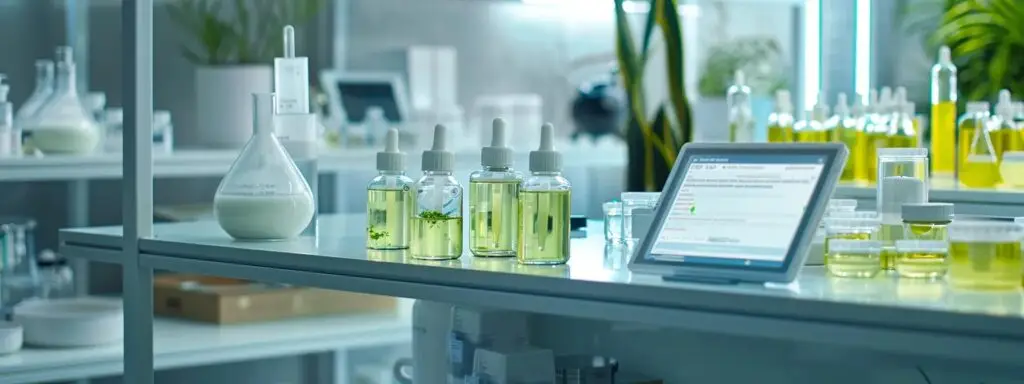
Prevention is as critical as remediation when it comes to mold control. Achieving long-term relief from mold requires implementing strategies that address the root causes of mold growth. By focusing on moisture reduction, improved ventilation, and regular maintenance, homeowners can create an environment that is naturally resistant to mold.
Maintaining Optimal Indoor Humidity Levels Naturally
Keeping indoor humidity levels in check is key to preventing mold growth. The ideal relative humidity should be maintained between 30-50% to inhibit mold proliferation. Utilizing dehumidifiers, especially in moisture-prone areas like basements and bathrooms, can significantly lower indoor humidity. Natural ventilation methods, such as opening windows and using ceiling fans, also aid in regulating moisture. Periodic monitoring using a hygrometer allows homeowners to adjust their settings accordingly. These measures, supported by both scientific research and expert advice, can help reduce the probability of mold development by ensuring a drier and more stable indoor climate.
Enhancing Airflow to Deter Mold Growth
Good airflow is a natural deterrent against mold since stagnant air allows moisture to accumulate on surfaces. Enhancing airflow can be achieved by strategically placing fans, keeping interior doors open, and using air purifiers with HEPA filters to remove airborne mold spores. Regularly cleaning air vents and ducts also ensures that dust and spores do not recirculate. Warrants found in peer-reviewed studies suggest that places with improved air circulation experience up to a 30% reduction in mold spore levels. By increasing ventilation, homeowners can keep potentially harmful spores from settling on surfaces, thereby controlling mold growth effectively.
Swiftly Repairing Leaks to Avoid Mold Issues
Addressing water leaks immediately is crucial for preventing mold. Even minor leaks in roofs, plumbing, or windows can create enough moisture to support mold growth if left unaddressed. Homeowners are advised to inspect property regularly for signs of water damage, such as discoloration or dampness, and to repair leaks promptly. Engaging a professional to assess and fix unresolved issues not only safeguards against mold but also maintains overall structural integrity. This proactive approach is backed by evidence from building maintenance studies indicating that early leak repairs can reduce mold infestation risks by a significant margin.
Choosing Mold-Resistant Materials for Your Home
When renovating or building, selecting mold-resistant materials can serve as a long-term prevention strategy. Materials such as mold-resistant drywall, treated lumber, and water-resistant flooring reduce the likelihood of mold colonization in vulnerable areas. Such materials are designed to minimize moisture absorption, thereby creating an inhospitable environment for mold. The adoption of these materials, alongside regular maintenance, offers a sustainable solution to minimizing future mold issues. Furthermore, these choices can contribute to improved indoor air quality and overall home safety, aligning with best practices recommended by the United States Environmental Protection Agency.
Regular Cleaning Routines to Keep Mold at Bay
Establishing a regular cleaning routine is essential for preventing recurrent mold growth. Natural cleaning methods using vinegar, tea tree oil, or baking soda should be incorporated into weekly or monthly maintenance schedules for areas like bathrooms, kitchens, and basements. Routine cleaning not only removes accumulating dust and mold spores but also creates a less hospitable environment for mold establishment. Consistency in cleaning practices has been shown in studies to significantly lower mold spore counts over time. Regular inspections and prompt cleaning of condensation-prone areas further help maintain indoor air quality and prevent the resurgence of mold.
For maintaining an effective cleaning schedule, our expert tips for your mildew clean routine provide detailed guidance on establishing sustainable practices.
Knowing When DIY Natural Mold Removal Is Not Sufficient
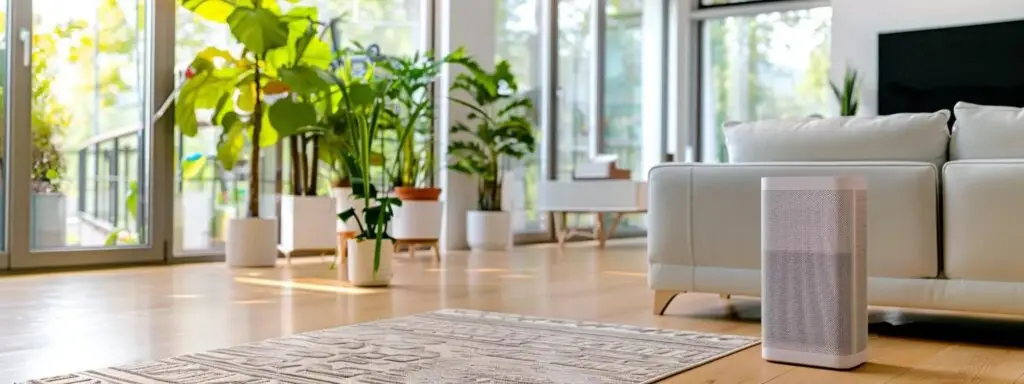
While natural mold removal techniques are effective for small or isolated infestations, there are situations where DIY remediation may be insufficient or even hazardous. Knowing when to seek professional assistance is critical to both health and safety, as well as to ensure that the mold issue is fully addressed. Advanced mold problems, especially those covering large areas or located in hidden structural spaces, require more extensive intervention.
Assessing Large-Scale Mold Infestations
When mold covers an area larger than ten square feet or has deeply penetrated materials such as insulation or drywall, professional mold remediation is often necessary. Extensive infestations may require specialized equipment, structural repairs, and assessments to ensure that mold does not recur. Professional evaluations provide a thorough analysis of the affected areas, using tools like moisture meters and thermal imaging cameras to detect hidden problems. Homeowners should be aware that large-scale mold issues are not only a cosmetic concern but can compromise the integrity of the building and pose serious health risks.
For homeowners dealing with extensive mold problems, understanding the mold remediation process for homeowners can help determine when professional intervention is necessary.
Addressing Mold Within HVAC Systems Safely
Mold in HVAC systems demands particular attention because it can spread spores throughout the entire home. In such cases, DIY methods may disperse spores further into living spaces, exacerbating health issues and contaminating clean areas. Professionals use specialized cleaning methods and equipment to thoroughly disinfect air ducts and components without causing excessive spread of spores. Regular HVAC maintenance and the installation of high-efficiency particulate air (HEPA) filters are recommended to prevent recurrence. If mold is detected in an HVAC system, quickly engaging professional services is the safest route to ensure that indoor air quality returns to healthy levels.
Identifying Potentially More Harmful Mold Varieties
Not all mold species are created equal; some, such as Stachybotrys chartarum (commonly known as black mold), produce high levels of mycotoxins that can be extremely hazardous to health. These dangerous varieties require immediate professional intervention due to their aggressive nature and the potential for severe health issues. Home testing kits can provide preliminary identification, but confirmatory analysis by a mold remediation expert is necessary when highly toxic species are suspected. Such inspections ensure that the correct remediation techniques are applied and that safety protocols are strictly followed.
Indicators That Professional Mold Assistance Is Needed
Several indicators suggest that professional help should be sought immediately. These include persistent health symptoms among household members, recurrent mold growth despite repeated cleaning, and visible signs of structural damage linked with moisture accumulation. If natural methods fail to eradicate the mold or if mold reappears rapidly after treatment, this may indicate a deeper underlying issue that requires expert management. Professionals can conduct holistic assessments of indoor air quality, moisture levels, and potential sources of contamination, then recommend targeted solutions.
Understanding the Scope of Natural Treatment Efficacy
While natural remedies such as vinegar and tea tree oil are effective for minor mold issues, their efficacy is limited when it comes to deeply embedded or widespread contamination. It is important for homeowners to understand that natural treatments work best as part of a broader prevention and maintenance strategy. In scenarios where mold persists or health concerns arise, professional intervention is warranted to ensure complete remediation and to protect the overall indoor environment.
Final Thoughts
Natural mold removal using non-toxic, DIY solutions can be both effective and environmentally responsible when applied correctly. By understanding how mold develops, adhering to safety protocols, and employing natural cleaning agents such as vinegar, tea tree oil, baking soda, hydrogen peroxide, and citrus seed extract, homeowners can effectively clean mold while minimizing health risks. Emphasis on moisture control, proper ventilation, and regular cleaning routines is critical for long-term mold prevention. However, knowing when to call in professionals is equally important, especially for large-scale infestations or hazardous mold species. This balanced approach ensures a safer, healthier, and mold-free living environment.
Frequently Asked Questions
Q: What are the benefits of using natural mold removers over chemical cleaners? A: Natural mold removers are non-toxic, environmentally friendly, and safer for home environments, especially for those with respiratory issues or allergies. They effectively combat mold without leaving harmful residues.
Q: How long should I leave a vinegar treatment on moldy surfaces? A: It is recommended to leave undiluted white vinegar on moldy areas for at least one hour to ensure effective penetration and neutralization of mold spores before scrubbing and rinsing.
Q: Can I mix different natural cleaning agents for better mold removal? A: Yes, mixing agents like vinegar and baking soda can enhance cleaning performance; however, always test on a small area first to avoid damage and ensure that the combination complements rather than neutralizes the effects of each component.
Q: When should I consider calling a professional for mold remediation? A: Professional help should be considered if the mold covers a large area, if it recurs quickly after treatment, or if hazardous mold species like black mold are suspected, as these situations require specialized equipment and expertise.
Q: How can I prevent mold from returning after cleaning? A: Prevent mold regrowth by controlling indoor humidity, repairing leaks promptly, maintaining proper ventilation, and regularly cleaning susceptible areas. Incorporate natural cleaning routines into your maintenance schedule to keep mold at bay.
